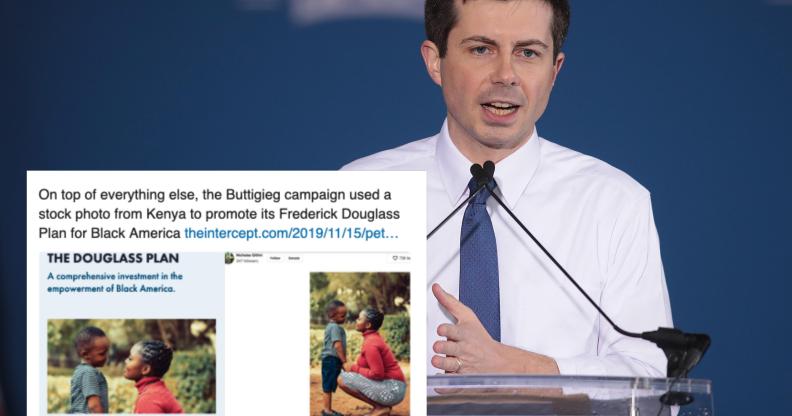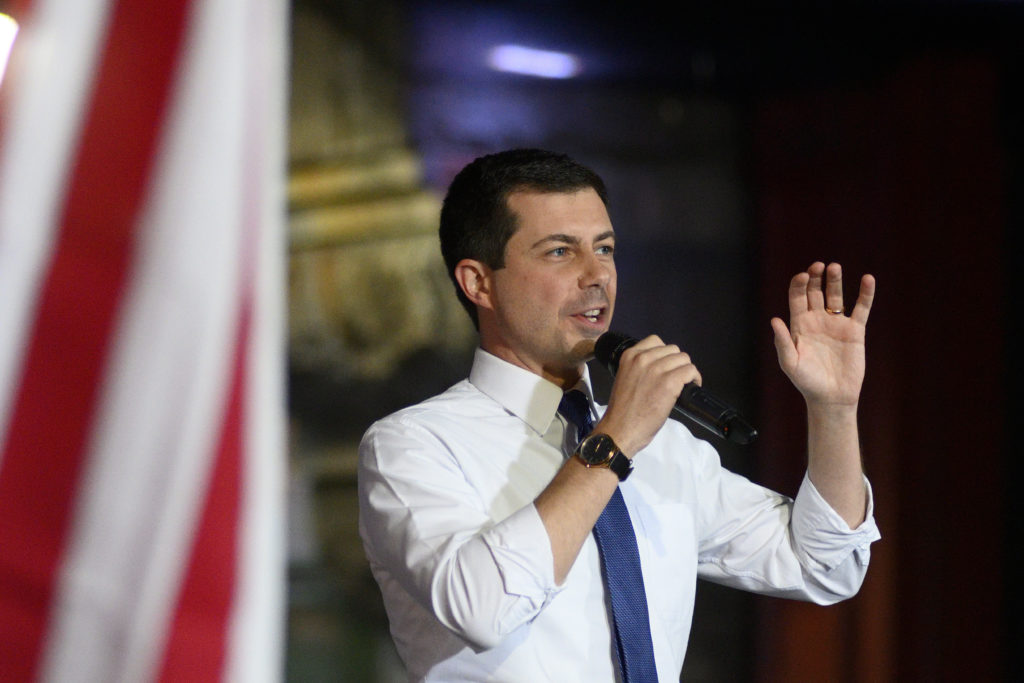The Pete Buttigieg campaign used a stock photo from Kenya to promote plan for fighting racism against black Americans

Pete Buttigieg’s bid to become US president has been dogged by allegations of tone deafness towards racial minority communities. (Scott Olson/Getty Images)
Pete Buttigieg's bid to become US president has been dogged by allegations of tone deafness towards racial minority communities. (Scott Olson/Getty Images)
Pete Buttigieg is in hot water for using a stock photo of a Kenyan woman in his policy plan aimed at addressing and dismantling the US’s longstanding history of racism.
In a campaign struggling to gain traction with black voters, the photo of a woman kneeling and talking to a child has rustled controversy.
Selected from an assortment of stock photos available for public reuse, campaign managers claimed it was “standard practise” to use such such images and have since apologised for the “mistake”.
Use of stock photo of Kenyan woman was a ‘big mistake’, says fellow presidential candidate.
The stock photo was first posted over the summer as part of the rollout of Buttigieg’s ‘Douglass Plan’, described as a “comprehensive investment in the empowerment of black America”.
The plan is an all-package deal. Ranging from health care to voting-rights reforms, as well as addressing racial biases in policing.
But Buttigieg’s proposal became battered by controversy after The Intercept writer Ryan Ginn brought to light the stock photo used alongside the plan on the campaign website.
On top of everything else, the Buttigieg campaign used a stock photo from Kenya to promote its Frederick Douglass Plan for Black America https://t.co/OqnGSIqCLS pic.twitter.com/qBqei71TdA
— Ryan Grim (@ryangrim) November 15, 2019
Tensions deepened when the woman featured in the photograph reached out to Grim. “What’s the meaning of the message accompanied by the photo?,” she said.
“Have no idea what’s happening.”
Furthermore, senator Kamala Harris – the sole black woman vying for the White House – told reporters this week that the photograph was a “big mistake”.
.@KamalaHarris speaks to @taraprindiville about @PeteButtigieg using a stock photo of a Kenyan woman to promote his #DouglassPlan. Says the Dem nom can't unify if they don't understand the right people have to be represented "based not on a stock photo but who they actually are" pic.twitter.com/jsTMm93i05— Tim Perry (@tperry518) November 18, 2019
“You can’t unify folks if you don’t understand who they are, and their specific needs, and the right that they have to be represented — based not on a stock photograph but who they actually are,” she said.
Buttigieg’s presidential bid has struggled to court black voters.
The ensuing controversy has yawned even wider the divide between Buttigieg and black communities, a crucial voting demographic for Democrats.
While the South Bend, Indiana, mayor is soaring in largely white Iowa, polls have pelted his campaign by showing the lack of support from black voters.
A poll of likely Democratic primary voters in South Carolina found that Buttigieg had the support of less than one percent of black voters.

Pete Buttigieg at a campaign rally in Philadelphia on October 20, 2019. (Bastiaan Slabbers/NurPhoto/Getty)
Moreover, the use of the stock photo eclipsed earlier controversy of the Douglass Plan.
Last month, campaigners listed 400 Californians – many black leaders – who purportedly supported the measure.
However, The Intercept reported that many of those listed not did not endorse the proposals.
And considering that Buttigieg remains haunted by allegations of racism in South Bend after firing a black police chief, his campaign team are scrambling to bridge the gap.
Pete Buttigieg campaign apologises for photograph use.
Buttigieg campaign rapid response communication director Sean Savett issued a statement amid criticism, explaining that the photograph has since been “removed”.
He explained that the photograph was posted on the website by a contractor working for the campaign. It was removed, he said, in mid-September in a “regular update” on the site.
Once the photos origins surfaced, the image was removed elsewhere across the website.
“Using stock photos is standard practice across many campaigns,” he wrote in a tweet.
As our campaign has grown, we have brought all of our web development in-house to help guard against mistakes like this. We apologize for its use and for the confusion it created.— Sean Savett (@ssavett) November 18, 2019
“The stock photo in question is widely utilised across the internet and it was selected while a contractor was running our site.
“As our campaign has grown, we have brought all of our web development in-house to help guard against mistakes like this.
“We apologise for its use and for the confusion it created.”

